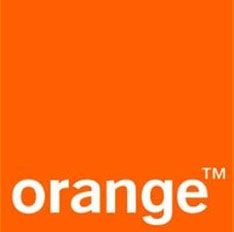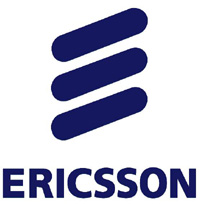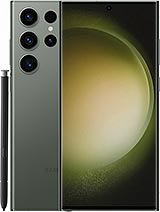Cell phone patents raise safety questions
Even as major cell phone manufacturers argued that phones pose no health risks, the companies were filing patents for devices such as antenna shrouds designed to protect users from radiation emitted by the phones.
The Network World discovery of the patents, which date to the early 1990s, adds fuel to the raging debate about whether cell phones cause health problems ranging from brain tumors to eye cancer to fatigue and memory loss. The U.S. General Accounting Office (GAO) recently reported that most studies "have found no adverse health effects, but the findings of some studies have raised questions about possible cancer and noncancer effects that require further investigation."
"When I saw the patents I was distressed that the scientific information had not been shared with us," says Dr. George Carlo, who at one time worked for the Cellular Telecommunications Internet Association, a Washington, D.C., trade group. Carlo headed up a six-year, $25 million research effort into the question of whether the use of cell phones causes genetic, biological or health effects. "When they talk about health risks [in] corporate documents and then say there are no health risks...how could there be such a glaring inconsistency?"
While the patents seem to indicate the manufacturers were looking for ways to reduce radio frequency emissions for safety reasons, some companies insisted they were simply trying to make the devices more efficient while others said they were unaware of the patents filed by individual employees.
Cell phones today meet Federal Communications Commission guidelines, but there's ongoing debate over the effectiveness of those guidelines.
Norman Sandler, director of global strategic issues for Motorola, one of the cell phone manufacturers that has patented such technology, says: "It should not be...implied that we think there's any health risk associated with the use of phones. Quite frankly, patent applications are often written by engineers and patent attorneys and don't necessarily [address] particular concerns of the company."
Although he could not comment on these patents in particular, Brent Routman, a Minneapolis attorney and immediate past chairman of the American Bar Association's Committee on Global Patent Costs, points out that filing patents is an expensive process.
"It would not be wise to just file patent applications on technology that is of no interest to the company," Routman says. "[A manager would] have a hard time justifying that to the vice president."
For instance, Routman estimates it would have cost $15,000 to $20,000 to write and file an application for a patent Motorola received in December 2000 for an invention it called Antenna Shroud for a Portable Communications Device.
Lately the battle of words and scientific research over cell phone health issues has crossed the consumer line into the corporate arena. About 110 million Americans use cellular phones, according to the GAO. And market research firm IDC says the percentage of companies paying for -- and hence probably issuing -- cell phones for employees climbed from 7 percent in 1999 to 11 percent in 2000.
That means cell phone safety is becoming an issue for the network and telecom managers who will ultimately decide whether to issue them.
There are at least three cases of employees either suing or filing workers compensation claims against their employers, claiming they developed brain tumors because they used cell phones on the job.
Everyone on both sides of the argument agrees that cell phones, analog and digital, emit radio frequency radiation from the antenna during transmission. And most agree that radiation -- some even say most -- is absorbed by the user's head, sinking 1 to 2 inches into the skull and heating tissue.
What the radio waves and heating does -- or doesn't do -- is at the heart of the scientific debate. And many of the patents appear to address the issue of how much of the cell phone's emitted radiation is directed toward the user's head.
A patent was issued to Ericsson GE Mobile Communications in 1996 for an alarm that would alert a user when "the maximum permitted power output is being approached."
Mikael Westmark, health and safety spokesman for Ericsson, says the manufacturing giant has a policy against patents aimed at reducing emissions, and this particular patent was taken out by an individual employee and not by the corporation. He adds that Ericsson is focused on making its cell phones more efficient.
However, the patent was filed under Ericsson's corporate name and is owned by Ericsson.
"It was an individual effort. It hasn't been used by us or by any part of Ericsson," Westmark says. "Frankly, it could be recorded as a mistake."
According to a U.S. Patent and Trademark Office spokesperson, a maintenance fee was paid in December 1999 to keep that patent active. The initial patent is good for three years in the U.S., at the end of which time a fee is needed to maintain it.
Nokia Mobile Phones got a U.S. patent in 1998 for an accessory unit designed to raise the antenna above the user's head, thereby reducing the amount of signal that is blocked by the head. The patent states that "the first objective of this invention [is] to decrease radiation towards the head of a handheld telephone user, while not adversely affecting the radiation pattern of the phone antenna."
"There are countless patents taken out all the time," says Bill Plummer, vice president of government and industry affairs for Nokia. Plummer also says that any patent associated with radio frequency emissions is probably connected to efforts to increase the efficiency of power usage.
"More power would require more emissions and that would mean the necessity of more protection," he says. "It has nothing to do with products on the market today. It may not have anything to do with devices on the market tomorrow."
Regarding Motorola's Dec. 26 patent for an antenna shroud, the company's Sandler says, "There are always design modifications...to increase proficiency of the phones, but we certainly are not trying to build anything into our products as a protection [against] any alleged or perceived health risk."
Nor is there a need to, according to some experts. "There is no scientific evidence that demonstrates that there are any adverse health effects from wireless phone radio frequency energy," says Dr. Russell Owen, chief of the radiation biology branch at the FDA's Center for Devices and Radiological Health. "At the same time, scientific questions remain so more research is needed."
Research & Studies
Making Information and Communication Technology (ICT) a central part of efforts to decrease CO₂ (Carbon Dioxide) output has the potential to reduce..
Research & Studies
New research from Ericsson (NASDAQ:ERIC) has suggested that mobile penetration is outpacing births rates across the Middle East. According to the..
Research & Studies
Thanks to mobile broadband, an ever-increasing number of people and devices are connected. This phenomenon provides more opportunities for operators,..

 Vodafone Oman
Vodafone Oman Emirates Telecom
Emirates Telecom  Ooredoo Om
Ooredoo Om Ooredoo Qa
Ooredoo Qa stc Bahrain
stc Bahrain Orange Egypt
Orange Egypt Mobily
Mobily Zain Jo
Zain Jo omantel
omantel STC
STC Emirates Du
Emirates Du Asiacell
Asiacell Etisalat Egypt
Etisalat Egypt  Telecom Egypt
Telecom Egypt jawwal
jawwal Orange Jo
Orange Jo Umniah
Umniah Zain Sa
Zain Sa Bahrain Batelco
Bahrain Batelco Zain Bh
Zain Bh Wataniya palestine
Wataniya palestine Kuwait Viva
Kuwait Viva  Zain Kw
Zain Kw Vodafone Qa
Vodafone Qa MTN Syria
MTN Syria Syriatel
Syriatel Sabafon
Sabafon Zain Iq
Zain Iq MTN Yemen
MTN Yemen Ooredoo Kw
Ooredoo Kw Vodafone Egypt
Vodafone Egypt  Samatel
Samatel Huawei
Huawei Samsung
Samsung MOTOROLA
MOTOROLA Alcatel
Alcatel Lenovo
Lenovo LG
LG Nokia
Nokia Sony Ericsson
Sony Ericsson HTC
HTC BlackBerry
BlackBerry Siemens
Siemens Acer
Acer Sony
Sony Asus
Asus VK
VK APPLE
APPLE BenQ-Siemens
BenQ-Siemens Sagem
Sagem Eten
Eten HP
HP Panasonic
Panasonic Amoi
Amoi Toshiba
Toshiba Sharp
Sharp Sonim
Sonim Bird
Bird Mitac
Mitac Philips
Philips Vertu
Vertu Pantech
Pantech Micromax
Micromax Maxon
Maxon Haier
Haier I-mate
I-mate Gigabyte
Gigabyte I-mobile
I-mobile Kyocera
Kyocera BenQ
BenQ Microsoft
Microsoft Telit
Telit Connect
Connect Sendo
Sendo SEWON
SEWON Mitsubishi
Mitsubishi DELL
DELL NEC
NEC Thuraya
Thuraya Neonode
Neonode Qtek
Qtek Be
Be Bosch
Bosch Palm
Palm MWG
MWG XCute
XCute Fujitsu Siemens
Fujitsu Siemens WND
WND INQ
INQ O2
O2 Innostream
Innostream Benefon
Benefon Google
Google


















